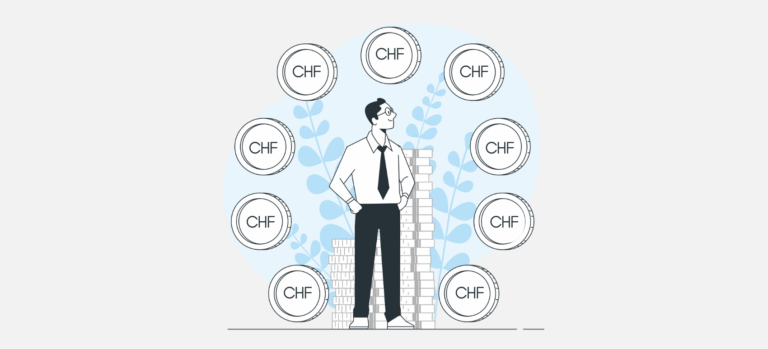What is wealth tax in Switzerland?
Wealth tax is a cantonal and communal tax levied annually on the net wealth of individuals, meaning all assets (accounts, securities, real estate, precious metals, etc.) after deducting debts.
It complements income tax and accounts for around 10% of tax revenues for cantons and communes. Unlike most European countries, Switzerland has retained this tax, which was abolished at the federal level in 1959.
How is wealth tax calculated?
Wealth tax is based on the net value of assets, meaning the total assets minus established debts.
1. Determining taxable assets
In Switzerland, the basis for calculating wealth tax is net wealth, i.e. the value of all the taxpayer's assets, less established debts.
Taxable wealth includes a wide range of elements. It starts with bank assets, whether current accounts, savings, postal deposits, or even cryptocurrencies, which are now explicitly included in taxable assets. Securities such as shares, bonds, interests in limited liability companies, cooperatives, or even options are also part of taxable wealth, as are holdings in Swiss or foreign investment funds.
The calculation also takes into account real estate (homes, land, business premises), valued at market value or yield depending on the canton, as well as private loans and receivables, capital insurance or annuities subject to redemption, and even more specific assets such as precious metals, vehicles, boats or caravans, or collections, works of art and jewelry.
2. Determining taxable assets
Once the assets have been identified, their value must be estimated in order to calculate the tax base. The general principle adopted by Swiss law is that of market value, i.e. the price that could be obtained on the market under normal conditions of sale.
For listed securities on the stock exchange (shares, bonds, traded funds), the taxable value corresponds to the last official price published on December 31 of the tax year.
Unlisted securities, such as shares in private or family-owned companies, which have no official market price, are subject to a specific valuation. Tax authorities generally combine two approaches: the earnings value, which capitalizes the company’s profits, and the intrinsic value, which takes into account equity and net assets. National guidelines (Circular 28 of the Swiss Tax Conference) ensure this valuation is harmonized across cantons.
For real estate, the methods vary depending on the location. Some cantons apply the market value directly, close to the sale price. Others prefer the rental value, calculated from actual or theoretical rents, especially for rental and agricultural properties. In many cases, a combination of both methods is used to arrive at a weighted value.
3. Deductions
All debts actually owed are deductible: mortgages, consumer credit, private or bank loans. On the other hand, purely contingent debts or guarantees (e.g. a surety bond) are only deductible if they are actually pledged. Where a taxpayer holds taxable assets in several cantons, his debts are apportioned in proportion to the value of these assets.
To take personal and family circumstances into account, each canton provides for social deductions. They vary, but generally concern :
- a personal deduction available to all taxpayers
- specific deductions for married couples, AHV or IV pensioners, and families with children;
- a taxable minimum, i.e. a wealth threshold below which no tax is levied.
A number of cantons regularly adjust their deductions or tax scales in line with inflation, in order to avoid "cold progression", i.e. a mechanical increase in the tax burden due solely to currency depreciation. In practice, these deductions can make a significant difference, particularly for modest households or married couples whose wealth is combined for taxation purposes.
4. Tax scales and rates
The majority of cantons apply a progressive scale, where the tax rate increases in stages according to the value of taxable wealth. The higher the wealth, the higher the marginal rate. This reflects the principle of contributive capacity.
Some cantons, however, prefer a proportional rate (or flat rate), where the same percentage applies regardless of the amount of wealth. This is notably the case in cantons such as Lucerne, Uri, Schwyz, Obwalden, Nidwalden, Appenzell Innerrhoden, St. Gallen, and Thurgau.
In many cantons, the basic legal scale (also called the “simple tax”) is multiplied by an annual coefficient set by the cantonal parliament or the municipality. This system allows tax revenues to be adjusted to budgetary needs. Municipalities often levy their own share in the form of “additional cents” added to the cantonal tax.
In most cantons, the Churches (Reformed and Catholic) also levy an additional contribution based on wealth. In principle, this tax is compulsory for members, except in certain cantons (Geneva, Neuchâtel, Ticino) where it is optional.
5. Franchise
Cantons provide a tax allowance, also called a minimum taxable amount. In practice, this means that below a certain level of net wealth, no tax is levied.
The threshold varies greatly from canton to canton. In some cantons, taxation only begins on taxable assets of a few tens of thousands of francs, while in others the threshold is set much higher, sometimes in excess of CHF 100,000. This mechanism is designed to spare modest wealth and concentrate taxation on taxpayers with significant financial capacity.
Who is affected by wealth tax?
Wealth tax affects all individuals domiciled in Switzerland. Tax liability is said to be unlimited: these taxpayers are taxed on their entire worldwide wealth, after deduction of debts.
Persons domiciled abroad may also be affected, but only to a limited extent. In this case, they pay tax only on assets located in Switzerland, for example :
- a building in the canton
- a company or permanent establishment operating in Switzerland
- claims secured by real estate in Switzerland
Family situation
Married couples living in the same household are taxed jointly: their assets are added together, which can increase the tax burden. However, most cantons offer tax relief (adapted tax scales, deductions).
The wealth of minor children is in principle added to that of the parent who holds parental authority. From the age of 18, the child is taxed separately.
What rate will be applied?
Wealth tax rates vary widely between cantons and municipalities, as there is no uniform federal rate.
The lowest rates are around 0.1 ‰ (0.01 %) for modest assets in some cantons. It can rise to around 3.5 ‰ to 4 ‰ (0.35 % to 0.4 %) per bracket for high net worth individuals, depending on canton and municipality.
In Geneva, the scale is progressive: it starts at 1.75 ‰ and can exceed 4 ‰ for very large fortunes. In cantons like Schwyz or Zug, reputed to be fiscally attractive, rates are much lower.
Wealth tax calculation tool
To accurately estimate the tax burden associated with your assets, you can use the official tax simulator of the Federal Tax Administration (FTA). This online tool covers all Swiss municipalities and calculates not only wealth tax, but also income, profit and capital taxes, as well as inheritance tax and pension benefits.





